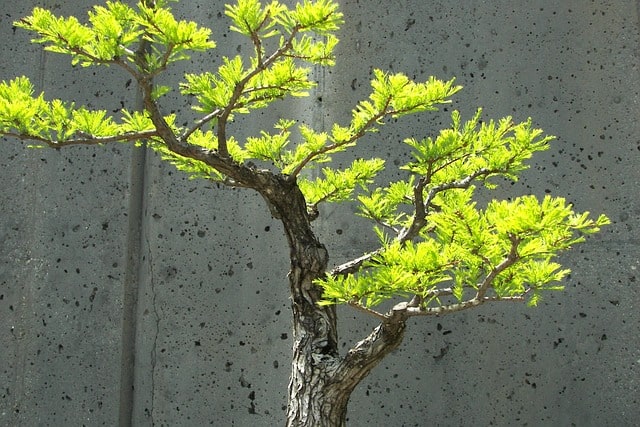Bonsai trees are a unique and beautiful addition to any home or garden. However, they can be finicky plants that require specific care and attention. One common problem that bonsai owners may encounter is the yellowing of their tree’s leaves.
While this issue can be concerning, there are several reasons why a bonsai may turn yellow, and many of them can be addressed with proper care.
Understanding why bonsai turning yellow is crucial in determining how to fix the issue. Overwatering or underwatering is a common cause of yellowing leaves, as is improper soil or nutrition.
Light and temperature requirements can also play a role in the health of a bonsai, as can pruning and trimming practices. Additionally, pests and disease can cause a bonsai to turn yellow. By identifying the underlying cause of the issue, bonsai owners can take the necessary steps to restore their tree’s health.
Key Takeaways
- Proper watering practices are crucial in preventing bonsai yellowing.
- Soil and nutrition play a significant role in the health of a bonsai tree.
- Identifying the underlying cause of yellowing leaves is crucial in restoring a bonsai’s health.
Similar posts:
Understanding Bonsai Yellowing
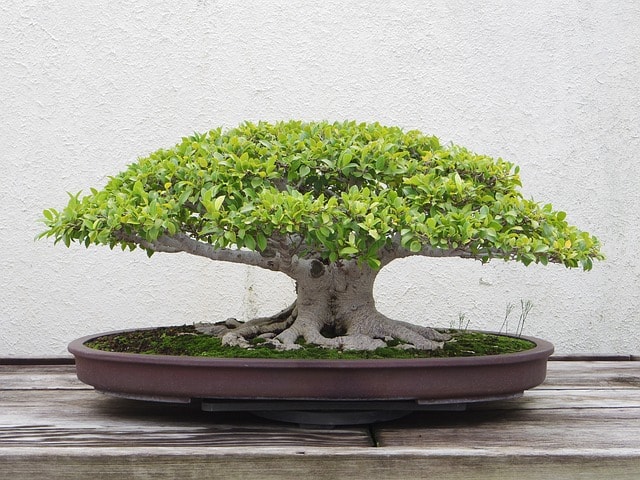
Bonsai trees are delicate plants that require special care and attention. One of the most common problems that bonsai enthusiasts face is yellowing leaves. Understanding the causes of bonsai yellowing is essential to maintaining a healthy and thriving tree.
In this section, we will explore the various factors that can contribute to yellowing leaves in bonsai trees.
1. Stress Factors
Like any living organism, bonsai trees can experience stress. Stress factors such as overwatering, underwatering, insufficient light, and extreme temperatures can lead to yellowing leaves. Overwatering is a common cause of yellowing leaves in bonsai trees.
When a bonsai tree is overwatered, its roots become waterlogged, which can lead to root rot and other fungal diseases. Underwatering, on the other hand, can cause the leaves to wilt and turn yellow.
2. Species Specific Yellowing
Different species of bonsai trees have different requirements for optimal growth. Some species are more susceptible to yellowing leaves than others. For example, juniper bonsai trees are known to turn yellow when they are exposed to too much sunlight.
On the other hand, ficus bonsai trees are more tolerant of sunlight and can handle a wider range of temperatures. Understanding the specific requirements of your bonsai tree species is essential to preventing yellowing leaves.
3. Seasonal Shedding
Seasonal shedding is a natural process that occurs in many bonsai trees. During the fall and winter months, bonsai trees may shed their leaves as part of their natural growth cycle.
This shedding is usually temporary and should not be a cause for concern. However, if your bonsai tree is shedding leaves outside of its normal growth cycle, it may be a sign of stress or disease.
In conclusion, yellowing leaves in bonsai trees can be caused by a variety of factors, including stress, species-specific requirements, and seasonal shedding. By understanding these factors and taking the necessary steps to address them, bonsai enthusiasts can maintain healthy and thriving trees.
Bonsai Watering Practices
Bonsai trees require careful watering practices to maintain their health and vibrancy. Overwatering and underwatering are the most common watering problems that cause bonsai leaves to turn yellow.
Overwatering and Root Rot

Overwatering is a common mistake made by bonsai enthusiasts. When a bonsai is overwatered, the roots become waterlogged, and oxygen cannot reach them. This leads to root rot, which can be fatal to the tree. Signs of overwatering include yellow leaves, wilting, and a foul odor coming from the soil.
To prevent overwatering, bonsai owners should ensure that the soil is well-draining and that the pot has drainage holes. They should also avoid watering the bonsai on a schedule and instead water it only when the soil is dry to the touch.
Underwatering and Wilting
Underwatering is another common mistake that can cause bonsai leaves to turn yellow. When a bonsai is underwatered, the soil becomes dry, and the roots cannot absorb water and nutrients. Signs of underwatering include yellow leaves, wilting, and a dry, crumbly soil.
To prevent underwatering, bonsai owners should ensure that the soil is moist but not waterlogged. They should water the bonsai thoroughly and allow the excess water to drain out of the pot.
Bonsai owners should also avoid using tap water, which can contain harmful chemicals that can damage the tree. Instead, they should use clean water or rainwater.
In summary, bonsai watering practices are crucial for maintaining the health and vibrancy of bonsai trees. Bonsai owners should avoid overwatering and underwatering, use well-draining soil, and avoid using tap water. By following these practices, bonsai owners can ensure that their trees thrive and remain healthy for years to come.
Bonsai Soil and Nutrition

Bonsai trees require specific soil and nutrition to thrive. Understanding soil composition and the importance of fertilizers is crucial for maintaining healthy bonsai trees.
Understanding Soil Composition
Bonsai trees require well-draining soil that is rich in minerals. Bonsai soil is typically a mixture of inorganic and organic materials, such as sand, gravel, peat moss, and bark. The soil should be able to retain moisture without becoming waterlogged, as this can lead to root rot.
It is important to note that regular potting soil is not suitable for bonsai trees, as it does not provide the necessary drainage. Bonsai soil can be purchased pre-mixed or can be made at home using the appropriate materials.
To ensure that the soil is providing the necessary nutrients, it is recommended to use a soil testing kit. This will help determine if the soil is lacking in any essential minerals.
Importance of Fertilizers
Bonsai trees require proper nutrition to grow and stay healthy. Nutrient imbalances or deficiencies can lead to yellowing leaves and stunted growth. Fertilizers can help provide the necessary nutrients for the tree.
It is important to use a balanced fertilizer, as too much of one nutrient can lead to an imbalance. Nitrogen-rich fertilizers are often used for bonsai trees, as they promote leaf growth. However, it is important to also provide phosphorus and potassium for root development and overall health.
Fertilizers should be applied according to the instructions on the package, as over-fertilization can lead to burning of the roots. It is recommended to fertilize every two weeks during the growing season and reduce fertilization during the dormant season.
Overall, proper soil composition and fertilization are essential for maintaining healthy bonsai trees. By providing the necessary nutrients, bonsai enthusiasts can enjoy the beauty of their trees for years to come.
Light and Temperature Requirements
Bonsai trees require specific light and temperature conditions to thrive. Inadequate light or incorrect temperature can cause the leaves to turn yellow and fall off.
Optimal Sunlight Conditions
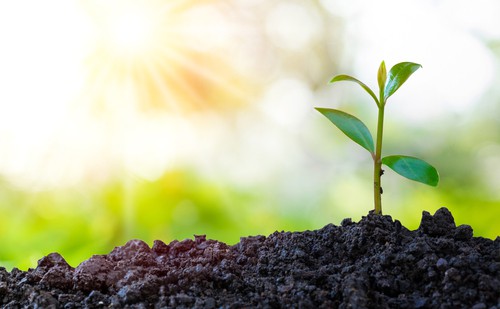
Different species of bonsai trees have varying light requirements. Some bonsai trees require direct sunlight, while others thrive in indirect sunlight. It is crucial to identify the specific light requirements of your bonsai tree and supply it accordingly.
If your bonsai tree is not receiving enough sunlight, it may exhibit yellowing leaves. Lack of sunlight can also cause the tree to grow weak and spindly. On the other hand, if your bonsai tree is receiving too much direct sunlight, it can cause the leaves to burn and turn brown.
Temperature Control
Temperature is another crucial factor in the growth and development of bonsai trees. Different species require different temperatures for optimal growth. It is best to use a thermometer to better gauge the temperature in a particular room or environment.
Bonsai trees thrive in temperatures between 60-75°F (15-24°C). Temperatures above or below this range can cause stress to the tree, which can lead to yellowing leaves. If you live in an area with extreme temperatures, it may be necessary to use a grow light or move the tree to a more suitable location.
In summary, bonsai trees require specific light and temperature conditions to thrive. It is essential to identify the specific light and temperature requirements of your bonsai tree and supply it accordingly.
By providing your bonsai tree with optimal light and temperature conditions, you can prevent yellowing leaves and promote healthy growth.
Bonsai Pruning and Trimming
Bonsai pruning and trimming are essential techniques for maintaining the health and shape of a bonsai tree. Pruning is the process of removing unwanted branches, leaves, and buds, while trimming involves cutting back the new growth to maintain the tree’s shape. Proper pruning and trimming can help to promote healthy growth and prevent the tree from becoming overgrown.
Proper Pruning Techniques
When pruning a bonsai tree, it is important to use the right tools and techniques to avoid damaging the tree. A sharp pair of pruning shears should be used to make clean cuts, and any wounds should be sealed with a wound sealant to prevent infection.
It is also important to prune at the right time of year, depending on the species of the tree.
When pruning, it is important to remove any dead or diseased branches first. Then, any branches that are crossing or rubbing against each other should be removed to prevent damage. Finally, any branches that are growing in the wrong direction or are spoiling the tree’s shape should be removed.
Effects of Over-Trimming
While pruning and trimming are important for maintaining the health and shape of a bonsai tree, over-trimming can have negative effects. Over-trimming can cause the tree to become weak and stunted, with fewer leaves and less energy to grow. It can also lead to the tree losing its natural shape and becoming unbalanced.
To avoid over-trimming, it is important to only trim back the new growth to maintain the tree’s shape. It is also important to allow the tree to rest and recover after trimming, by not trimming again too soon. Wiring can also be used to shape the tree, rather than relying solely on trimming.
In conclusion, proper pruning and trimming are essential techniques for maintaining the health and shape of a bonsai tree. Using the right tools and techniques, and avoiding over-trimming, can help to promote healthy growth and prevent the tree from becoming overgrown.
Bonsai Pot and Drainage
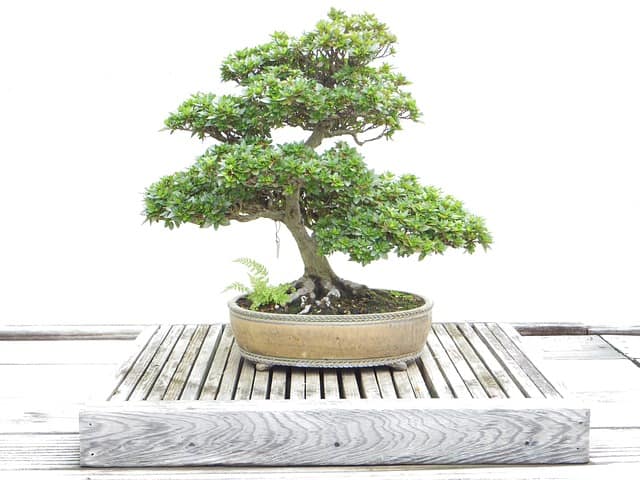
Bonsai trees are delicate plants that require special care and attention to thrive. One of the essential factors in keeping your bonsai healthy is choosing the right pot and ensuring adequate drainage. In this section, we will discuss the importance of the bonsai pot and drainage and how it can affect the health of your bonsai tree.
1. Choosing the Right Pot
Choosing the right pot for your bonsai tree is crucial. The pot should be the right size for the tree, with enough space for the roots to grow. A pot that is too small will restrict the growth of the roots, and a pot that is too large will hold too much water, which can lead to root rot.
Bonsai pots are specially designed containers that are shallow and have drainage holes at the bottom. These pots are ideal for bonsai trees because they allow for proper drainage and aeration of the roots. It is essential to choose a pot that is appropriate for the size of your bonsai tree.
2. Importance of Drainage
Drainage is critical for the health of your bonsai tree. Without proper drainage, water can accumulate in the soil, leading to root rot and other diseases. Bonsai pots have drainage holes at the bottom to allow excess water to escape. It is essential to ensure that these drainage holes are not blocked to allow for proper water flow.
When watering your bonsai tree, it is essential to water it thoroughly and allow the excess water to drain out of the pot. It is also essential to ensure that the pot has adequate ventilation to allow for proper air circulation.
3. Repotting
Repotting your bonsai tree is essential to ensure that it has enough space for the roots to grow and to refresh the soil. Repotting should be done every two to three years, depending on the size of the pot and the growth rate of the tree.
When repotting your bonsai tree, it is essential to ensure that the new pot has proper drainage holes and is the right size for the tree. It is also essential to use the right soil mix for your bonsai tree, as different species of bonsai trees require different soil mixes.
In conclusion, choosing the right pot and ensuring proper drainage is essential for the health of your bonsai tree. Bonsai pots are designed to provide adequate drainage and aeration of the roots, which is crucial for the health of your tree.
When repotting your bonsai tree, it is essential to choose the right pot and soil mix to ensure that your tree has enough space to grow and thrive.
Pest and Disease Management
Common Bonsai Pests

Bonsai trees are susceptible to various pests that can attack the leaves, branches, and roots. The most common pests that bonsai owners face are aphids, spider mites, mealybugs, and scale insects. These pests can cause damage to the tree by sucking the sap from the leaves, which can lead to yellowing and deformation of the leaves.
To prevent pest infestation, it is essential to keep the bonsai tree in good health by providing adequate light, water, and nutrients. Regularly inspecting the tree for any signs of pests can also help detect any issues early on.
If pests are found, it is recommended to use a pesticide specifically designed for bonsai trees and follow the instructions carefully.
Preventing and Treating Diseases
Bonsai trees can also be affected by various bacterial and fungal diseases that can cause yellowing of the leaves. These diseases can be caused by overwatering, poor drainage, or insufficient air circulation.
To prevent diseases, it is essential to keep the bonsai tree in good health by providing the right amount of water and ensuring proper drainage.
If a disease is suspected, it is important to isolate the infected tree from other bonsai trees to prevent the spread of the disease. The affected parts of the tree should be removed, and a fungicide or bactericide should be applied to the tree.
It is important to follow the instructions on the product carefully and continue to monitor the tree for any signs of disease.
In conclusion, preventing and managing pests and diseases in bonsai trees requires regular maintenance and inspection. By keeping the tree in good health and taking prompt action when issues arise, bonsai owners can help ensure the long-term health and beauty of their trees.
Specific Bonsai Types Care
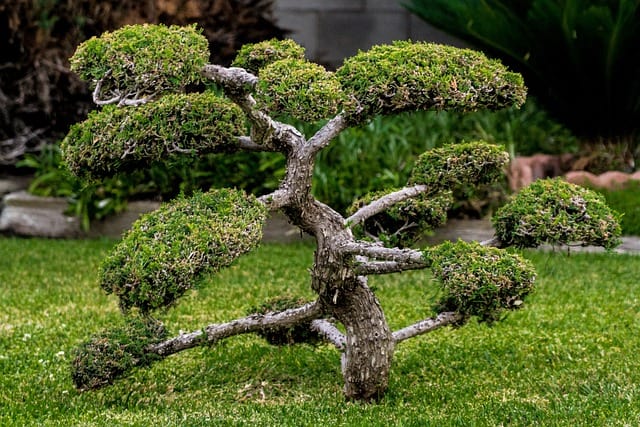
Bonsai trees are delicate, and each species requires specific care to thrive. In this section, we will discuss the care of deciduous and evergreen bonsai, as well as indoor vs outdoor bonsai.
1. Deciduous Bonsai Care
Deciduous bonsai trees, such as maple and elm, require different care than evergreen bonsai. These trees lose their leaves in the fall and require a dormant period during the winter.
During the growing season, deciduous bonsai trees need to be watered frequently to prevent the soil from drying out. However, during the dormant period, they require less water. It is essential to monitor the soil moisture level to ensure it does not dry out completely.
Deciduous bonsai trees also require fertilization during the growing season to promote healthy growth. It is best to use a balanced fertilizer with equal amounts of nitrogen, phosphorus, and potassium.
2. Evergreen Bonsai Care
Evergreen bonsai trees, such as juniper and pine, require different care than deciduous bonsai. These trees retain their leaves year-round, and they do not require a dormant period.
Evergreen bonsai trees require less frequent watering than deciduous bonsai trees. It is essential to monitor the soil moisture level and only water when the soil is dry.
Fertilization is also necessary for evergreen bonsai trees. However, it is best to use a fertilizer with a higher nitrogen content to promote healthy foliage growth.
3. Indoor vs Outdoor Bonsai
Indoor and outdoor bonsai trees require different care. Indoor bonsai trees, such as ficus and jade, require less sunlight and water than outdoor bonsai trees.
Indoor bonsai trees should be placed near a window with indirect sunlight. They also require less frequent watering than outdoor bonsai trees. It is essential to monitor the soil moisture level and only water when the soil is dry.
Outdoor bonsai trees, such as juniper and pine, require full sunlight and frequent watering. It is essential to monitor the soil moisture level and water when the soil is dry to the touch.
In conclusion, each bonsai species requires specific care to thrive. By following the guidelines for each species, bonsai enthusiasts can ensure their trees remain healthy and vibrant.
Frequently Asked Questions
Why are the leaves on my bonsai tree turning yellow?
Yellow leaves on a bonsai tree can be a sign of various problems. Overwatering, underwatering, lack of sunlight, pest infestation, nutrient deficiencies, and disease are some common reasons why bonsai leaves turn yellow.
It is essential to identify the underlying cause to take appropriate action and prevent further damage to the tree.
How do I fix yellow leaves on my bonsai tree?
The first step to fixing yellow leaves on a bonsai tree is to identify the underlying cause. If the problem is overwatering, reduce the frequency of watering and ensure that the soil is well-draining.
If the issue is underwatering, increase the frequency of watering and ensure that the soil is moist. If the tree lacks sunlight, move it to a brighter location. If the tree has a pest infestation, treat it with appropriate pesticides.
If the tree has nutrient deficiencies, fertilize it with a balanced fertilizer. If the tree has a disease, treat it with appropriate fungicides.
What does an overwatered bonsai tree look like?
An overwatered bonsai tree can have yellow leaves, wilted leaves, and a mushy stem. The soil can also appear waterlogged, and the roots can be rotting. Overwatering can lead to root rot, which can be fatal to the tree if not treated promptly.
Do bonsai trees lose their leaves in winter?
Bonsai trees can lose their leaves in winter, depending on the species. Deciduous bonsai trees lose their leaves in the fall, while evergreen bonsai trees retain their leaves throughout the year. It is essential to know the species of the bonsai tree to understand its seasonal changes.
How do I get my bonsai tree green again?
To get a bonsai tree green again, ensure that it receives sufficient sunlight, water, and nutrients. Fertilize the tree with a balanced fertilizer, prune it regularly to promote new growth, and remove any dead or diseased branches.
It is also essential to repot the tree every few years to ensure that it has fresh soil and adequate space for root growth.
Why is my bonsai going yellow?
A bonsai tree can turn yellow due to various reasons, including overwatering, underwatering, lack of sunlight, pest infestation, nutrient deficiencies, and disease. It is essential to identify the underlying cause and take appropriate action to prevent further damage to the tree.

Hey, I’m Lisa and I’ve been an avid gardener for over 30 years. I love writing, talking and living in the garden! Feel free to connect with me on my socials below

